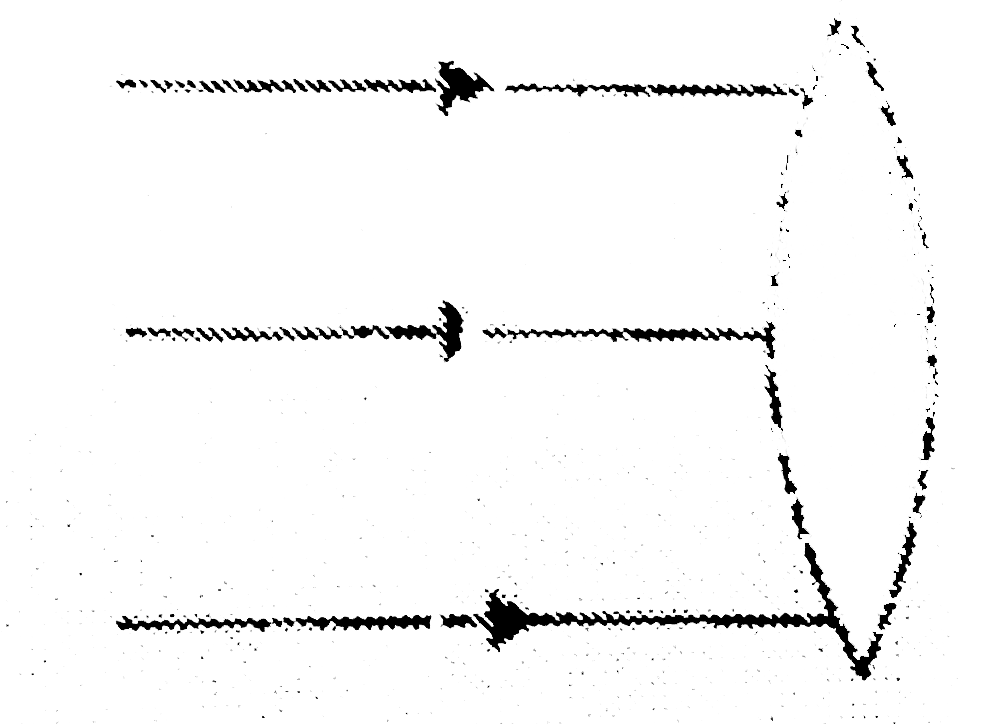Parallel rays
Step by step video & image solution for Parallel rays by Maths experts to help you in doubts & scoring excellent marks in Class 7 exams.
Updated on:21/07/2023Similar Questions
a) What type of lens is shown in the diagram on the right? What will happen to the parallel rays of light? Show by completing the ray diagram.
b) Your eye contains a convex lens. Why is it unwise to look at the sun?

View SolutionFill in the following blanks with suitable words.
(a) Parallele rays of light are reflected by a concave mirror to a point called the……………
(b) The focal length of a concave mirror is the distance from the …………to the mirror.
( c) A concave mirror................rays of light wheres a convex mirror..............rays of light.
(d) For a convex mirror, parallel rays of light appear to diverge from a point called the ...........................
View Solution
Knowledge Check
The objective of terrestrial telescope has a focal length of 80 cm and its magnifying power is 20, when adjusted for parallel rays. If the erecting lens has focal length 20 cm, the total length of such a telescope is
A164 cmB124 cmC100 cmD84 cmStatement I : A myopic person is advised to use concave lens.
Statement II : The eye lens of a myopic person focuses the
parallel rays coming from distant ogject in from distant objects in front of the retina.Aa Both the statements individually true and Statement II is
the correct explanation of Statement I.Bb Both the statements are individually true but Statement II is
not correct explanation of Statement I.Cc Statement I is true but Statement II is false.Dd Statement I is false but Statement II is true.A simple telescope consisting of an objective of focal length 60 cm and a single eye lens of focal length 5 cm is focused on a distant object in such a way that parallel rays emerge from eye lens. If the object subtends an angle of 2∘ at the objective, the angular width of the image is (Let tanθ=θ assuming θ small).
A10∘B24∘C50∘D(1/6)∘
Focal length of a thin lens in air, is 10 cm. Now medium on one side of the lens is replaced by a medium of refractive index μ=2. The radius of curvature of surface of leng, in contact with the medium, is 20 cm. Find the point on principal axis where parallel rays incident on lens from air parallel to axis will converge.

View SolutionAssertion : Concave lens is used to correct myopia or short-sightedness.
Reason : A concave lens of suitable focal length diverges the parallel rays from the distant objects as if they are coming from the far point of the myopic eye. This helps the eye lens to form a clear image at the retina.
View SolutionA simple telescope, consisting of an objective of focal length 60cm and a single eye lens of focal length 5cm is focussed on a distant object is such a way that parallel rays comes out from the eye lens. If the object subtends an angle 2∘ at the objective, the angular width of the image.
View SolutionA simple telescope, consisting of an objective of focal length 60 cm and a single eye lens of focal length 5 cm is focussed on a distant object in such a way that parallel rays comes out from the eye lens. If the object subtends an angle 2∘ at the objective, the angular width of the image
View SolutionA simple telescope, consisting of an objective of focal length 60cm and a single eye lens of focal length 5cm is focused on a distant object in such a way that parallel rays emerge form the eye lens. If the object makes an angle of 2∘ at the objective, the angular width if the image is
View Solution
